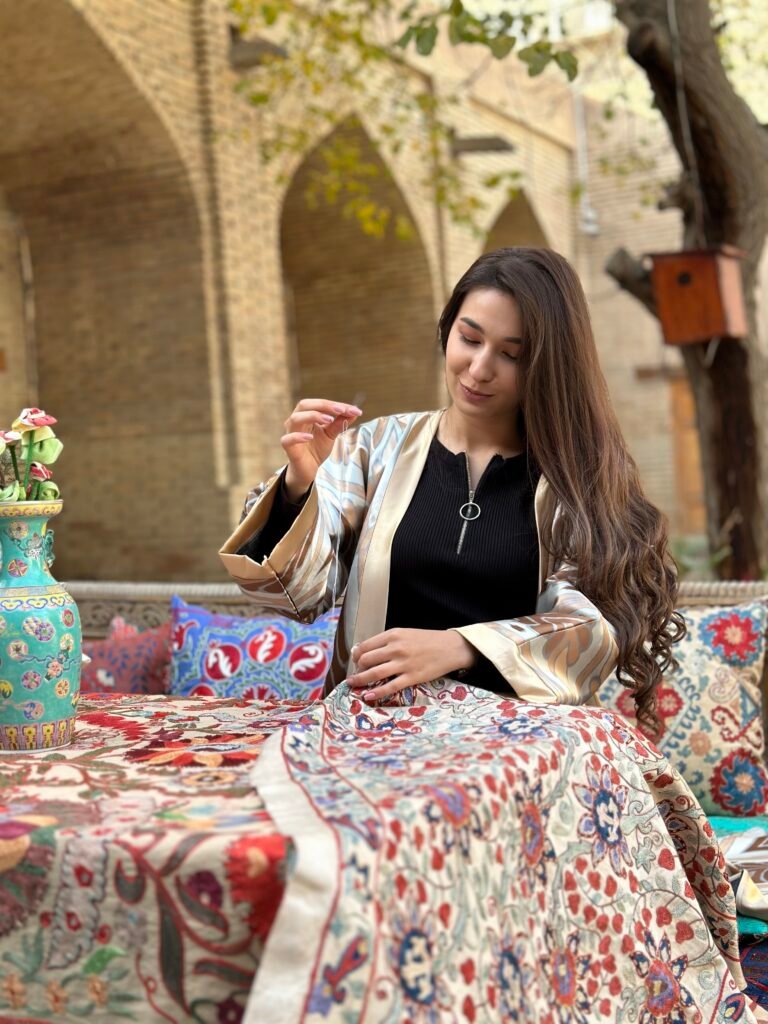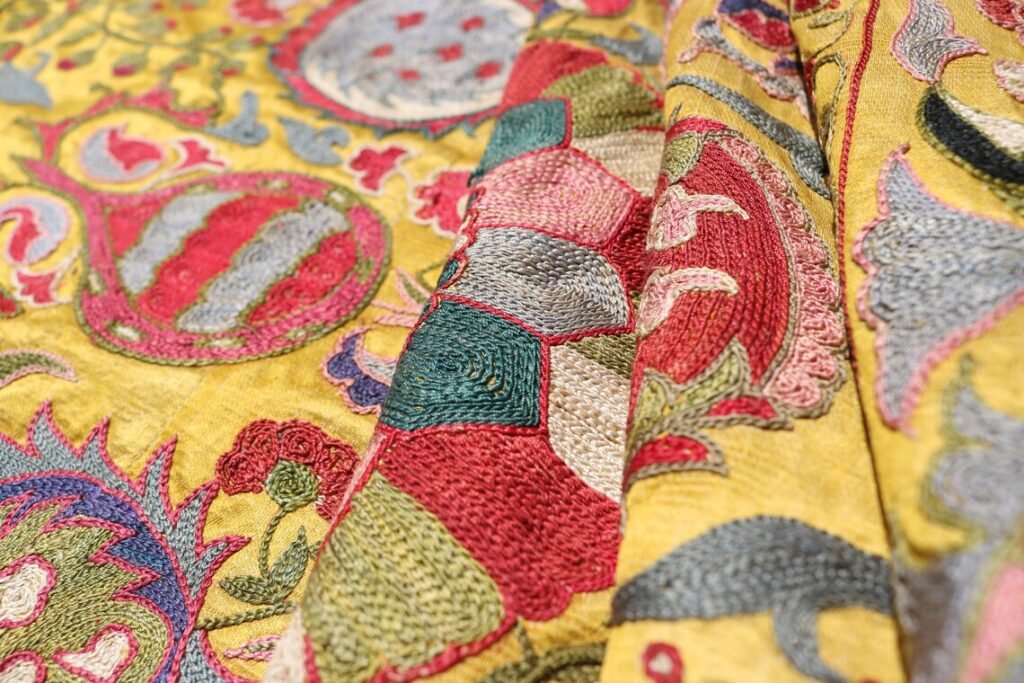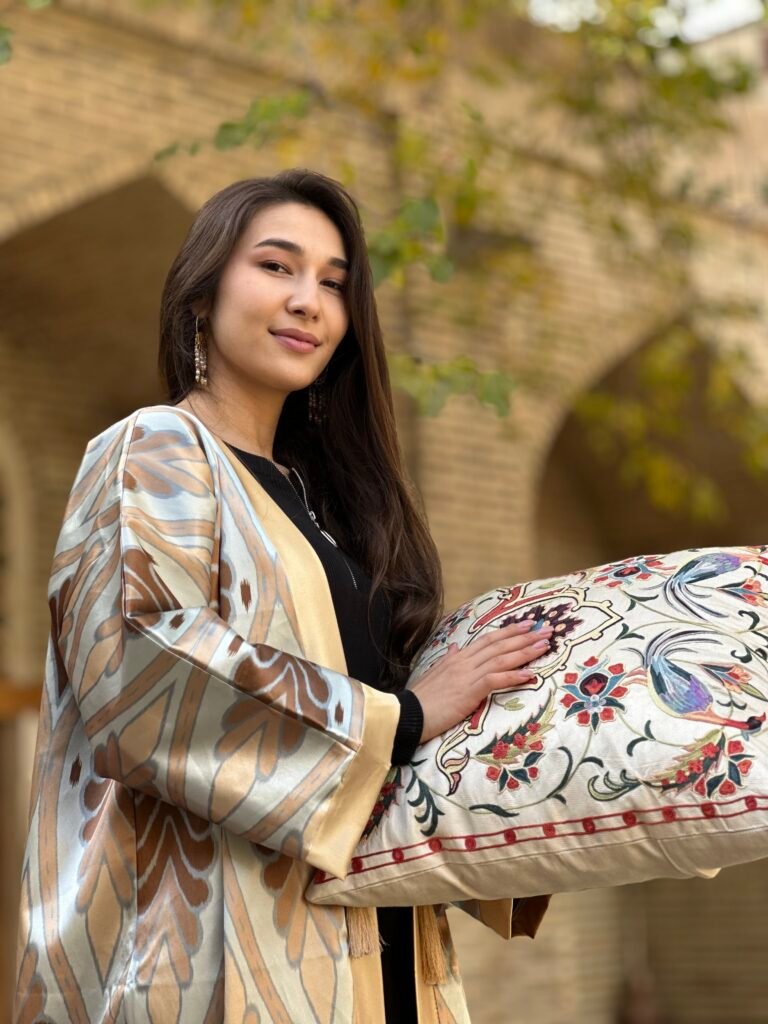
Suzani Embroidery: Artistic Tapestry of Central Asia.
Top 7 useful information about Suzani Table of Contents Introduction to Suzani Embroidery Discover the world of Suzani Embroidery, a captivating textile art form that
Suzani, a masterful creation, stands as a hand-embroidered decorative textile with its roots deeply embedded in the cultural tapestry of Tajikistan, Uzbekistan, and Iran. A testament to craftsmanship and tradition, Suzani weaves together stories through its intricate designs.
The origin of Suzani is shrouded in various theories, each adding a layer of mystique to its history. One prevailing belief suggests that young girls adorned Suzani as part of their dowry, showcasing both skill and dedication. Another intriguing theory proposes Suzani as a canvas for self-expression, allowing artisans to tell their unique stories through needlework.
Suzani is not a singular entity; it unfolds into a rich spectrum of types, each emanating its charm. From the enchanting Samarkand Suzani to the vibrant Persian Suzani, there are eleven distinctive types that mirror the diversity of the regions they hail from.
The very name “Suzani” whispers of its essence. Originating from Persian, it amalgamates “needle” (suzan) and “to sew” (zane), encapsulating the soul of needlework embroidery that defines this art form.
Suzani patterns, like a poetic language, carry meanings that resonate with cultural symbolism. From peppers warding off the evil eye to turtles symbolizing wisdom and longevity, each motif weaves a narrative. The canvas of Suzani is painted with the sun, moon, flowers, leaves, grapevines, and occasional depictions of fish and birds, adding depth to its visual language.
Suzani breathes life onto cotton, occasionally silk, fabric using the delicate touch of silk or cotton threads. The stitches employed, including chain stitches, satin stitches, and looped stitches, dance harmoniously on the fabric. Couching, a technique where decorative threads are laid on the fabric, elevates the sewing line, creating a visual symphony. Often crafted in multiple parts, Suzani pieces are meticulously sewn together, giving birth to the final masterpiece.
While believed to have originated in the late 18th and early 19th centuries, some experts suggest Suzani’s existence dates back even earlier. The detailed descriptions of embroideries documented by the Castilian ambassador Ruy González de Clavijo in the early 15th century offer glimpses into Suzani’s predecessors, hinting at a legacy that spans centuries.
Colors in Suzani hold a profound significance, drawing inspiration from nature. Blue and red, the most expensive pigments, symbolize the sky or water and love or energy, respectively. Black, derived from wool thread, adds depth, while green represents vegetation or nature, and white signifies purity or light. The meanings, however, may shift based on the cultural or regional context in which Suzani is created.
Embark on a journey through the threads of Suzani, where each stitch tells a story, and each color carries the weight of tradition and symbolism.


Top 7 useful information about Suzani Table of Contents Introduction to Suzani Embroidery Discover the world of Suzani Embroidery, a captivating textile art form that

1. What is Suzani? Suzani, a masterful creation, stands as a hand-embroidered decorative textile with its roots deeply embedded in the cultural tapestry of Tajikistan,

The Timeless Allure of Uzbek Suzani Embroidery As we venture into the rich tapestry of Central Asian culture, the spotlight shines on a captivating world
Copyright © 2024 - Minzifa Suzani Shop
